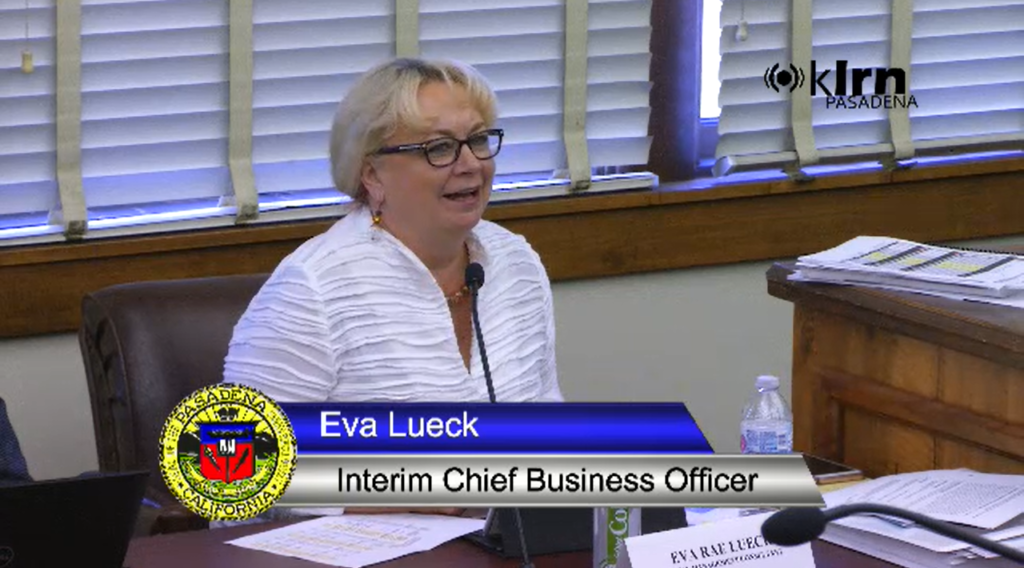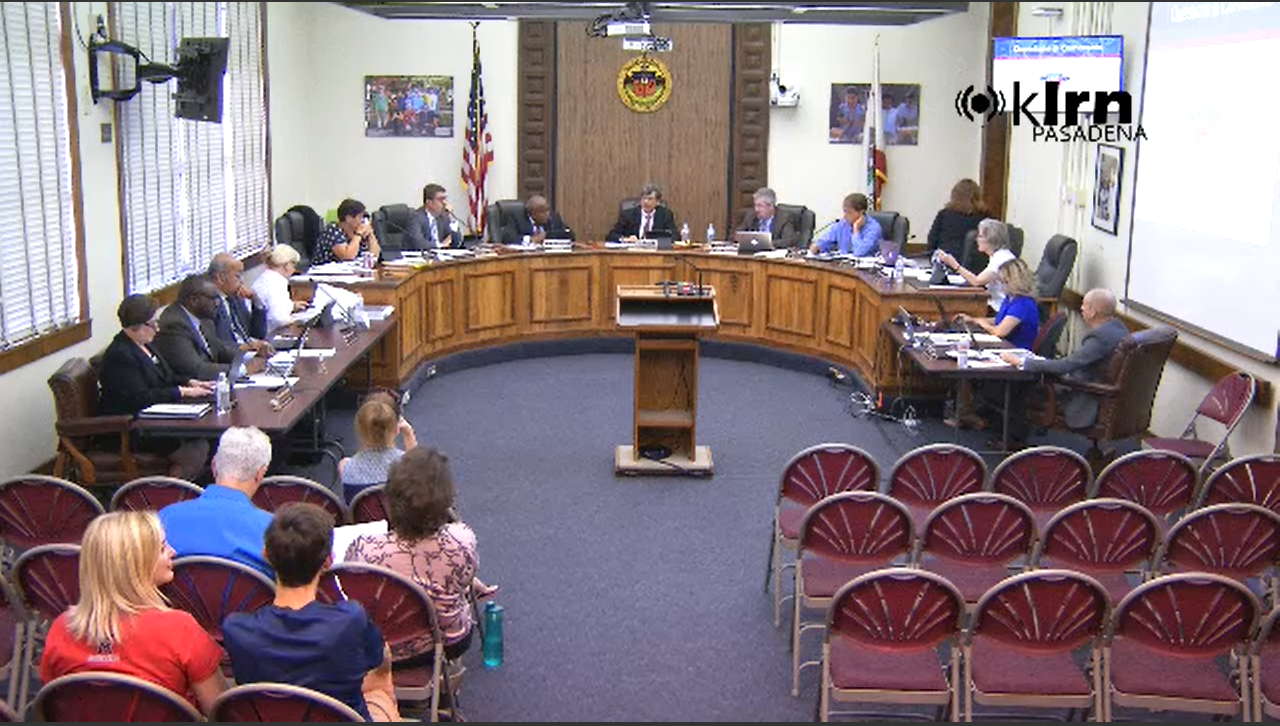 View Winners →
View Winners → Pasadena Board of Education Hears Positive Budget News


The 2017-18 unrestricted general fund balance, the PUSD’s main operating fund and starting point for 2018-19, turned out to be higher than originally projected – to the tune of $3.64 million. – Courtesy screenshot / KLRN
By Gus Herrera
Following a rough 2017-18 school year, the Pasadena Unified School District’s (PUSD) financial situation has begun to trend in a positive direction. At the board of education’s latest meeting, Chief Interim Business Officer Eva Lueck detailed various revisions to the budget that have resulted in net positives for the district going forward.
Firstly, the 2017-18 unrestricted general fund balance, the PUSD’s main operating fund and starting point for 2018-19, turned out to be higher than originally projected – to the tune of $3.64 million.
“We had projected that the unrestricted general fund … would end with a balance of $15.46 million, however, when all of our numbers came together, we ended up with $19.1 million,” revealed Lueck.
This disparity between the projected and actual figures was mostly due to expenses being $4.89 million lower than expected – a factor which outweighed the fact that revenue also came in lower than projected by $1.25 million.
The PUSD’s actual expenses for salaries/benefits, supplies, services, and special education were all below the district’s projections. Special education contributions were the biggest outlier, as they decreased by $2.86 million – a result of negotiated discounts between the special education department and its various service providers.
The second highest contributor to the reduced expenses was the services category ($780,000 less than projected), a direct result of the 2017-18 fiscal stability plan, according to Lueck.
But the good news doesn’t end there – Lueck also revealed some positive changes to this year’s (2018-19) unrestricted general fund. Despite losing $2.62 million in one-time grant funding, the local control funding formula (LCFF), the district’s main source of ongoing funding, increased by $1.05 million.
Although this may be a net loss for 2018-19, the increase in LCFF funds will become a positive factor down the line.
“It’s hard to see a negative being a positive in revenues, but that LCFF funding is an ongoing increase, so as you move through multi-year projections, that million dollars is going to multiply,” explained Lueck.
Additionally, the district identified 10 positions that should have been phased out from the budget going into this year, but ended up “rolling through automatically,” according to Lueck. By eliminating these positions, seven of which are vacant, the district will save another $1.35 million.
The total impact of these revisions really begins to show up in the projections for 2020-21: where the district previously projected a deficit of $5.34 million, the ending balance is now expected to be $2.15 million.
Unfortunately, the PUSD is still projected to be short of its required three percent reserve levels for 2020-21, although the revisions do take a substantial chunk out of the amount that the district has to come up with (from $12 million, down to $4.1 million). Projections also do not take into consideration the fact that student enrollment is lower than anticipated and that the budget does not include the leeway to provide employees any raises in the near future.

“The bottom line is we are spending more than we are receiving, we need to make reductions,” said Lueck, “we are going to be … bringing forward a list of potential reductions for the board to consider.” – Courtesy screenshot / KLRN
Therefore, more cuts will be required, especially if the board of education wants to satisfy its formal policy target of six percent worth of reserves. Even though some potential new revenue streams are in the works (i.e. Pasadena’s proposed sales tax measure and a potential property swap of the district’s offices), the board does not want to stake its financial future on income that is far from certain.
Thus, there was a consensus around the board that any future reductions should try and reach the six percent target, in order to afford the district as much flexibility as possible down the road.
“The bottom line is we are spending more than we are receiving, we need to make reductions,” said Lueck, “we are going to be … bringing forward a list of potential reductions for the board to consider.”






































































































